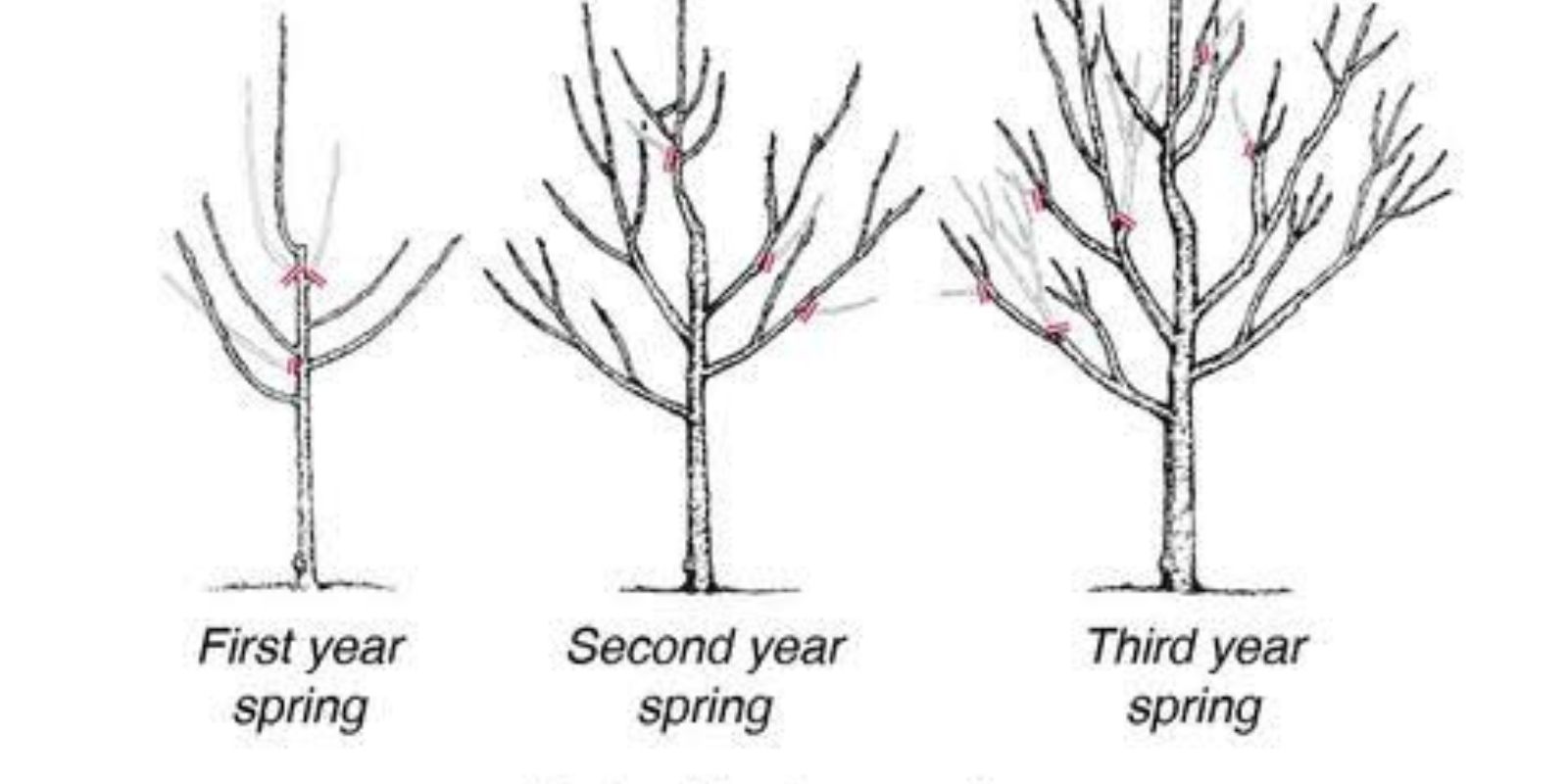Pruning is an essential practice in maintaining healthy, productive apple trees. It’s not just about aesthetics; proper pruning ensures better fruit quality, prevents disease, and encourages the growth of new, fruitful wood. Whether you’re caring for a young tree or revitalizing an old one, knowing how and when to prune is key to a thriving orchard. In this comprehensive guide, we’ll explore the best practices for pruning apple trees, covering everything from timing to tools and techniques.
Why Pruning is Essential for Apple Trees
Apple trees, like all fruit trees, require regular pruning to remain healthy and productive. Pruning helps:
- Promote Fruit Production: Removing old, non-productive wood allows the tree to focus energy on new, fruit-bearing branches.
- Enhance Air Circulation: Proper pruning opens up the canopy, reducing the risk of fungal infections and pests.
- Improve Sunlight Penetration: More light reaches the inner branches, leading to better fruit development.
- Maintain Tree Shape: Pruning helps keep the tree manageable and ensures even distribution of branches.
When to Prune Apple Trees
Timing is crucial when pruning apple trees. There are two primary pruning periods:
- Winter/Spring (Dormant Season):
- Best Time: January to March, while the tree is dormant but before new growth begins.
- Purpose: This is the ideal time for structural pruning, shaping the tree, and removing dead or diseased wood.
- Summer:
- Best Time: After harvesting, usually in late summer.
- Purpose: Focuses on controlling growth, removing water sprouts (non-fruit-bearing shoots), and fine-tuning the tree’s shape.
Important Note: Avoid pruning during the fall, as it can stimulate new growth that may not survive winter.
Types of Pruning Cuts
Understanding the different types of cuts is essential for effective pruning:
- Training Pruning (Young Trees):
- Goal: Shape the tree and establish a strong framework of branches.
- How: Shorten the central leader (main trunk) and encourage lateral branch development.
- Maintenance Pruning (Mature Trees):
- Goal: Keep the tree healthy by removing dead, diseased, or damaged branches.
- How: Focus on thinning out crowded areas to improve airflow and light penetration.
- Fruitwood Pruning:
- Goal: Encourage the growth of new, productive branches.
- How: Remove older, non-productive wood and leave younger, fruit-bearing shoots.
- Shaping Pruning:
- Goal: Maintain the desired size and shape of the tree.
- How: Trim back about 20-30% of the tree’s volume to prevent overgrowth and ensure balanced structure.
Step-by-Step Guide to Pruning Apple Trees
Step 1: Gather the Right Tools
- Sharp pruning shears for small branches.
- Loppers for medium-sized branches.
- A pruning saw for thicker limbs.
- Disinfectant to sterilize tools and prevent the spread of disease.
Step 2: Inspect the Tree
- Identify dead, diseased, or damaged branches.
- Look for overcrowded or crossing branches.
Step 3: Start with Dead or Diseased Wood
- Remove any branches that are dead, damaged, or infected.
- Make clean cuts close to the main branch or trunk to prevent decay.
Step 4: Shape the Tree
- Focus on creating an open, vase-like structure to allow sunlight and air to reach the center.
- Remove any crossing branches or those growing inward.
Step 5: Thin Out Overcrowded Areas
- Identify clusters of branches and thin them out to improve airflow and reduce the risk of disease.
Step 6: Prune for Fruit Production
- Cut back older wood to encourage the growth of new, fruit-bearing shoots.
- Leave younger branches with healthy buds for next year’s fruit.
Step 7: Finish with Height Management
- Shorten the central leader if the tree is too tall.
- Trim back the tree’s overall height by 20-30%, ensuring it remains manageable.
Key Tips for Successful Pruning
- Disinfect Your Tools: Always clean tools before and after use to prevent spreading diseases.
- Cut at a 45° Angle: Make cuts just above an outward-facing bud to promote healthy growth.
- Don’t Over-Prune: Avoid removing more than one-third of the tree in a single season, as this can stress the tree.
- Monitor for Pests and Diseases: After pruning, check for signs of pests or infections and address them promptly.
Pruning Mature vs. Young Apple Trees
Young Apple Trees (1-4 Years):
- Focus on training the tree to establish a strong framework.
- Prune lightly to encourage balanced growth and develop a central leader.
Mature Apple Trees (5+ Years):
- Emphasize maintenance pruning to remove old wood and encourage new growth.
- Thin out overcrowded branches to improve fruit size and quality.
Special Considerations for Old or Neglected Trees
Reviving an old or neglected apple tree requires patience and careful pruning:
- Year 1: Remove dead or diseased branches and thin out the canopy.
- Year 2: Focus on shaping the tree and removing older wood.
- Year 3: Encourage new growth and balance the tree’s structure.
Common Mistakes to Avoid
- Pruning Too Late: Cutting too close to the growing season can weaken the tree.
- Over-Pruning: Removing too much wood can reduce fruit production and stress the tree.
- Improper Cuts: Avoid leaving stubs, as they can invite pests and disease.
Benefits of Proper Pruning
- Increased Fruit Yield: Pruned trees produce higher-quality fruit with better flavor.
- Healthier Trees: Removing dead or diseased wood helps prevent the spread of infections.
- Easier Maintenance: A well-pruned tree is easier to manage and harvest.
Conclusion: Prune for Success
Pruning apple trees may seem daunting at first, but with the right knowledge and tools, it becomes a rewarding task. By following these guidelines, you’ll not only improve the health and productivity of your apple trees but also enjoy a bountiful harvest year after year.
Are you ready to transform your apple trees? Share your experiences or questions in the comments below!
#AppleTreeCare #PruningTips #HealthyGardening #FruitTreeLove #GardeningMadeEasy #GreenThumb #OrchardCare #GrowYourOwnFruit

